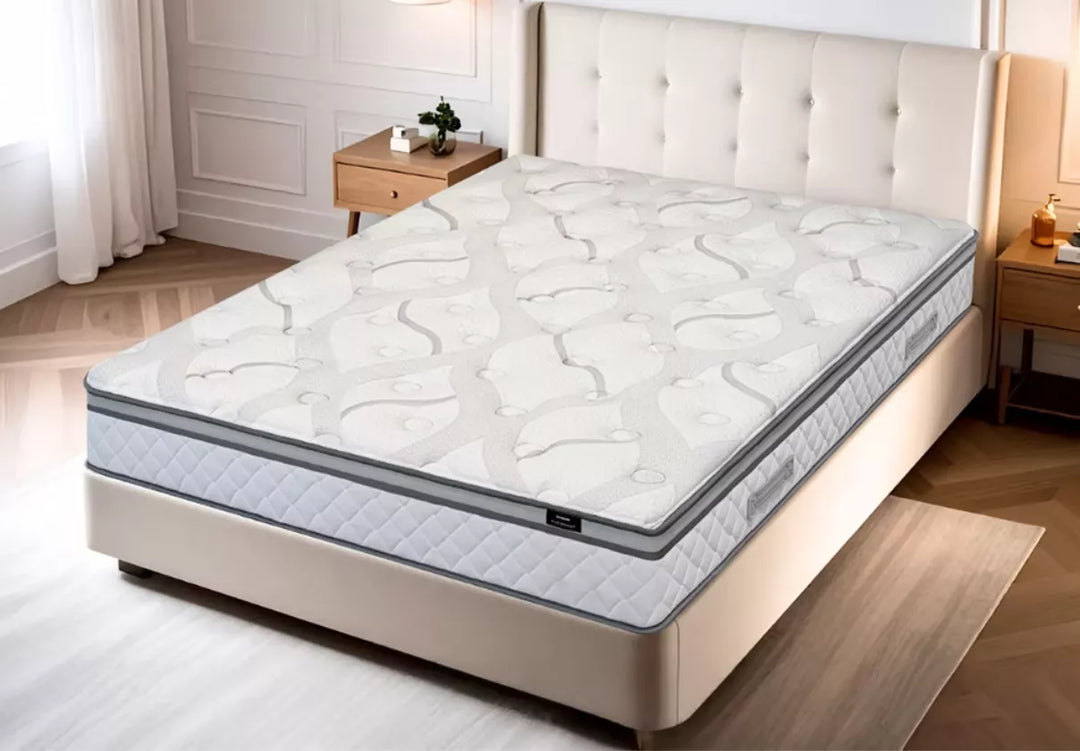Napping: The Art of a Power Nap
What is a power nap?
A power nap is a short period of sleep taken during the day to provide a quick burst of rest and rejuvenation. It is a deliberate and strategic nap that aims to boost energy levels, improve cognitive function, and enhance productivity. Unlike a full sleep cycle, which typically lasts 90 minutes, a power nap is relatively short, usually ranging from 10 to 30 minutes.
The term "power nap" suggests that this type of nap is focused on quickly recharging the body and mind, providing a jolt of energy to tackle the remaining hours of the day. The goal is to enter a state of light sleep or a stage of non-rapid eye movement (NREM) sleep without progressing into the deeper stages of sleep, such as rapid eye movement (REM) sleep, which is associated with dreaming.
During a power nap, the body goes through different sleep stages. Initially, individuals may experience drowsiness and relaxation as they transition from wakefulness to sleep. As the nap progresses, they enter a stage of light sleep, which is characterised by slower brainwave activity and reduced muscle tension. Light sleep is typically easier to wake up from and is associated with feelings of refreshed alertness upon awakening.
By keeping the nap duration relatively short, individuals can avoid entering deeper stages of sleep, which can lead to sleep inertia—a period of grogginess and disorientation upon waking. Sleep inertia occurs when one is abruptly awakened from deep sleep, and it may take some time to fully regain alertness and cognitive function.
The benefits of a power nap are numerous. It helps combat daytime drowsiness, enhances cognitive performance, improves memory and attention, reduces stress, boosts mood, and increases productivity. Power napping can be especially valuable for individuals who experience an afternoon slump or those who haven't had sufficient nighttime sleep due to various factors.
To make the most of a power nap, it is important to create a suitable environment conducive to sleep. Finding a quiet, dimly lit space and using relaxation techniques such as deep breathing or meditation can help facilitate a restful nap. Setting an alarm is crucial to prevent oversleeping and disrupting nighttime sleep.
How long is a power nap?
The duration of a power nap typically ranges from 10 to 30 minutes. However, the ideal length can vary based on individual preferences and desired outcomes. Here's a breakdown of different nap durations and their effects:
-
10-20 minutes: A short power nap of 10 to 20 minutes is often recommended. This duration allows individuals to quickly recharge and experience immediate benefits such as increased alertness, improved cognitive function, and reduced fatigue. Short naps are less likely to cause sleep inertia, which is the grogginess experienced upon waking from a deeper sleep stage. These brief naps can be especially useful for combating the midday slump without disrupting nighttime sleep.
-
25 minutes: Some individuals find that extending the nap to around 25 minutes provides a balance between quick rejuvenation and a slightly longer rest period. This duration allows for a bit more time in the lighter stages of sleep, enabling the brain to benefit from increased memory consolidation and cognitive enhancement.
-
30 minutes: Napping for 30 minutes may work well for individuals who prefer a slightly longer nap or need more time to transition into a state of relaxation. This duration can still provide benefits in terms of increased alertness, creativity, and productivity. However, it's important to note that a 30-minute nap may increase the risk of sleep inertia upon waking, especially if the person enters deeper stages of sleep.
It's essential to consider personal preferences, individual sleep patterns, and the desired outcome when determining the ideal duration for a power nap. Additionally, it's crucial to avoid napping for longer periods as it can lead to sleep inertia and potentially disrupt nighttime sleep. Experimenting with different nap lengths and assessing how you feel after each nap can help identify the optimal duration that works best for you.
Remember, setting an alarm is crucial to ensure you wake up within the desired time frame and avoid oversleeping.
What are the benefits of power napping?
Power napping offers a range of benefits that can significantly enhance well-being, cognitive function, and productivity. Here are some key benefits of power napping:
What are the best power nap techniques?
Here are some effective power nap techniques to make the most out of your nap and optimise its benefits:
Find a Quiet and Comfortable Environment: Look for a quiet, calm, and dimly lit space where you can relax and nap without distractions. If possible, use earplugs, an eye mask, or white noise machines to block out noise and create a soothing atmosphere.Set an Alarm: To avoid oversleeping and potential grogginess, set an alarm to wake you up after your desired nap duration. This ensures that you stay within the recommended timeframe for power napping and helps you maintain your daily schedule.
Choose the Right Time: Select a suitable time for your power nap, typically in the early afternoon, when many people experience a natural dip in energy levels. Avoid napping too close to your regular bedtime, as it may interfere with your nighttime sleep.
Determine the Ideal Duration: Experiment with different nap durations to find what works best for you. Generally, a power nap of 10 to 30 minutes is recommended to achieve the desired benefits without entering deep sleep stages that can cause sleep inertia. Adjust the duration based on your personal preference and how you feel after waking up.
Practice Relaxation Techniques: Before settling down for your nap, engage in relaxation techniques to promote a state of calmness and help you fall asleep faster. Deep breathing exercises, progressive muscle relaxation, or meditation can aid in relaxation and prepare your body and mind for rest.
Use Caffeine Naps: Try a technique called "caffeine naps" if you need an extra energy boost. Consume a cup of coffee or other caffeinated beverage just before your nap. Caffeine takes around 20 minutes to take effect, so by the time you wake up, you'll benefit from the combined effects of the nap and the caffeine, resulting in enhanced alertness.
Establish a Nap Routine: Consistency is key. Establish a regular power nap routine by napping at around the same time each day. This helps regulate your body's internal clock, making it easier to fall asleep quickly and improving the effectiveness of your naps.
Yes, caffeine naps, also known as "coffee naps" or "caffeine power naps," can be effective in boosting alertness and enhancing the benefits of both caffeine and napping. While it may seem counterintuitive to combine caffeine, a stimulant, with a nap, the combination can lead to increased alertness and productivity. Here's how caffeine naps work:
-
Timing: The key to caffeine naps is timing. The concept is based on the fact that it takes approximately 20 minutes for caffeine to take effect after consumption. By strategically timing your caffeine intake before a short nap, you can harness the stimulating effects of caffeine as you wake up from your nap.
-
Quick Nap: Start by consuming a caffeinated beverage, such as coffee or tea, shortly before your nap. Aim to nap for around 10 to 20 minutes, allowing enough time to enter a light sleep stage without going into deep sleep.
-
Synergistic Effect: While you nap, the caffeine starts to be absorbed and enters your bloodstream. As you wake up, you benefit from the combined effects of the nap and the caffeine. The caffeine acts as a stimulant, counteracting the sleep inertia (grogginess) that may occur after waking up, and enhances alertness and cognitive function.
The effectiveness of caffeine naps can vary among individuals, and not everyone may experience the same level of benefit. However, studies and anecdotal evidence have shown positive outcomes for some people. Here are a few considerations:
-
Individual Sensitivity: People vary in their sensitivity to caffeine. Some individuals may be more responsive to its effects, while others may be less affected. Factors such as body weight, metabolism, caffeine tolerance, and individual differences can influence the outcomes of caffeine naps.
-
Sleep Quality: It's important to prioritise the quality of your nap. To maximise the benefits of the caffeine nap, focus on creating a comfortable and conducive sleep environment. Find a quiet, dark space where you can relax and allow yourself to fall into a light sleep stage.
-
Time Constraints: Caffeine naps may not be suitable for everyone, especially if you have time constraints or cannot consume caffeine due to personal preferences, health conditions, or sensitivity to stimulants. In such cases, a regular power nap without caffeine can still provide beneficial results.
Remember that caffeine, especially in higher doses or consumed too close to bedtime, can interfere with your regular sleep patterns. It's important to be mindful of your caffeine consumption and consider any potential impact on your nighttime sleep quality.
Who are power naps best for, and how do I know I’m doing it right?
Power naps can be beneficial for a wide range of individuals, particularly those who experience daytime drowsiness, fatigue, or a decline in alertness during the day. Here are some groups of people who may find power naps particularly helpful:
Office Workers: Power naps can be beneficial for individuals working in sedentary jobs, especially during the afternoon slump when energy levels tend to dip. Napping can help combat fatigue, enhance productivity, and improve focus and concentration.
Students: Students facing long study hours, late-night studying, or irregular sleep schedules can benefit from power naps to recharge and improve cognitive function. Napping can enhance memory consolidation, aid in information retention, and boost alertness for better academic performance.
Shift Workers: Those working night shifts or irregular schedules often struggle with sleep disruptions and excessive sleepiness. Power naps can help alleviate fatigue and enhance alertness during work hours, making it easier to adjust to shift work and maintain optimal performance.
Athletes and Fitness Enthusiasts: Power naps can aid in recovery for athletes and individuals engaged in intense physical activity. Napping helps restore energy, reduce muscle fatigue, and promote overall physical rejuvenation.
Older Adults: Older adults may experience changes in their sleep patterns and find it harder to get a full night's sleep. Power naps can help mitigate daytime sleepiness and enhance cognitive function in this population.
Now, how do you know if you're doing power napping right? Here are a few signs that indicate you're getting the most out of your power nap:
Feeling Refreshed: After waking up from your nap, you should feel refreshed, rejuvenated, and more alert. If you feel groggy, excessively tired, or experience difficulty waking up, you may have napped for too long or entered deeper stages of sleep.
Improved Alertness and Focus: One of the primary goals of power napping is to enhance alertness and focus. If you notice an improvement in your cognitive function, ability to concentrate, and overall mental clarity after your nap, it suggests that your power nap was effective.
Increased Productivity: Successful power napping should result in increased productivity. If you find yourself more efficient, motivated, and able to tackle tasks with improved performance after your nap, it indicates that your power nap was beneficial.
No Negative Impact on Nighttime Sleep: Power naps should not interfere with your nighttime sleep. If you can fall asleep easily at night, maintain a regular sleep schedule, and experience restful sleep, it indicates that your power napping is not disrupting your overall sleep patterns.
Consistency: If you can consistently incorporate power naps into your routine and reap the benefits regularly, it suggests that you are practicing power napping effectively.






Leave a comment